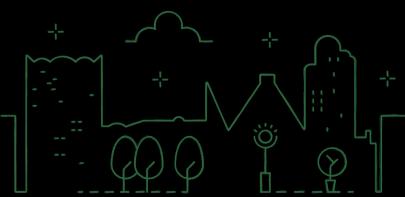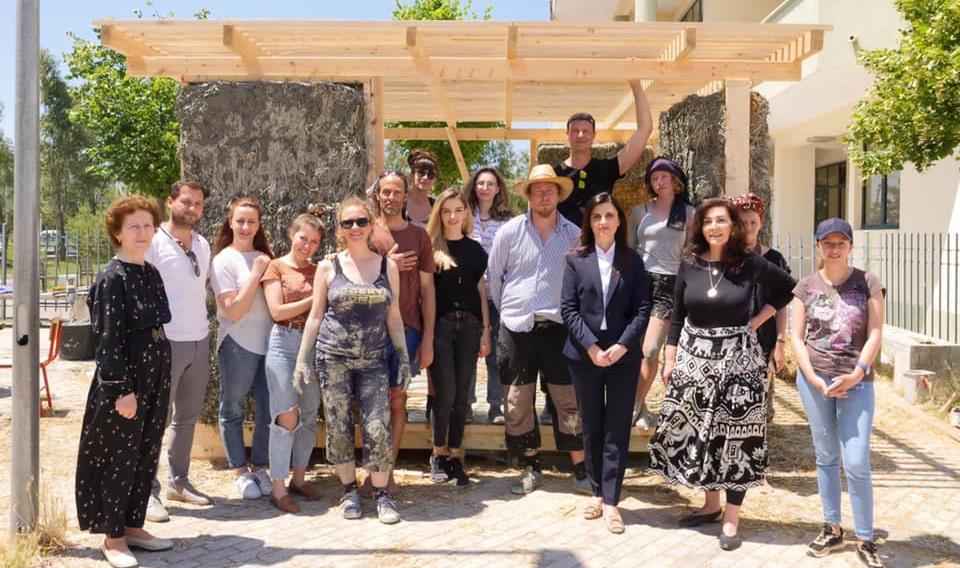6 minute read
Lessons Learned and Recommendations
Next Article
Lessons Learned and Recommendations
Education and values
Nowadays, in the face of the climate crisis and the progressive loss of biodiversity, it is necessary to take immediate action, even small ones while contributing to a greater change. Such activities include initiatives like Build Back Better project. It contained three diverse actions. It resulted in a three-day online course, construction of a small pavilion and hereby publication.
All these steps are aimed at reaching a larger group of recipients and familiarizing them with the idea of natural building. And though it may seem as a step back, it is rather a return to long-abandoned materials and technology. This is the result of a series of analysis and a search for a remedy for the global environmental situation. The construction sector is responsible for 30-40% of total global greenhouse gas emissions. It uses 3 billion tons of raw materials each year which corresponds to about 40-50% of total demand for raw materials and construction-related energy consumption which exceeds 40% of global supply. Technological changes that have occurred in the construction sector since the midtwentieth century have significantly shortened construction time. The side effect of this process is that more energy is required for the material itself, more waste is generated, which actually means shifting the costs of material disposal to subsequent generations. The construction sector is now largely based on an infinite linear model. Meanwhile,


the resources (even cement sand) are finite and the planet's ability to absorb waste and emissions has its limit followed by a climate catastrophe. The use of raw materials in construction, such as straw, clay, hemp or other raw materials with low built-in energy, natural or recycled will significantly contribute to counteracting climate change by: - reduction of CO2 emissions generated during the production of, among others steel, cement, fired ceramics, insulating materials by reducing the energy consumption of technological processes, - popularization of natural raw materials and materials not based on derivatives of industry related to the exploitation and use of fossil fuels (for example gypsum - waste from heat and power plants, polystyrene - a derivative of crude oil), - reduction of CO2 emissions during transport - natural resources can be obtained and processed locally; negative carbon footprint in the environment in the growing phase cereals absorb carbon dioxide - while in the production of typical thermal insulation materials, such as polystyrene or mineral wool, pollutants are emitted, - reducing the amount of technological waste generated during the production process of building materials, - reducing the amount of energy necessary for the operation of buildings during their use; biodegradability of building materials. Buildings in natural technologies can be simpler than they used to be under construction thanks to the implementation of achievements such as prefabrication and modularity, structure optimization. Objects erected using these technologies can be constructed as quickly as buildings made of highly processed raw materials. A residential house built of prefabricated timber and straw (such as a show pavilion in the school yard) can be assembled on site in a matter of days. Prefabricated products can be manufactured in a few weeks using basic tools, as demonstrated during the workshop. It is important to emphasize that going back to natural materials is not going back in time. It is a significant step in the development of circular economy which is a must. Natural technologies are low-emission and the materials and buildings made of them are biodegradable. They are an alternative to construction based on brick technology using, inter alia, cement, steel, fired bricks, polystyrene or petroleum materials, the production of which is based on the use of minerals and thermal emission treatment. They are based on locally available and low-processed materials (e.g., straw is a byproduct of agricultural production, it is a renewable raw material) using manufacturing techniques based on human labor, without excessive use of energy-consuming, expensive and complicated devices. They allow for engaging future residents and



entire communities engaging in the process of building thus increasing its resilience to crises.
Social Perspective and Promotion of Friendly Environment
An important element of the entire process in the Build Back Better project was the participation of the local community. During the online course, we had the opportunity to meet mainly with professionals, while during the construction: with young people, students, school employees and professionals. The construction of the pavilion was a perfect occasion for visits of the officials and local authorities, including Mayor of Durrës Municipality and Ambassador of Czech Republic in Albania, representing Visegrad International Fund, and talks about climate crisis and the response to it, which can be found in natural technologies. The visits followed their presence and the presence of other high officials from Durrës Municipality and Embassy of Czech Republic in Albania in the online training. Working together and involving people with no previous experience in the construction has proven that within the usage of such materials it is possible and what's more pleasant integrating a group working together.

Natural construction makes it possible for future residents to carry out most of the work without complications. Natural construction lowers the overall costs, provides the necessary hands for work, but also creates a bond between future users and their space. It gives efficiency because even in the face of a cataclysm (and unforeseen and violent weather phenomena, climate disturbances are an element accompanying the climate crisis) they can rebuild houses with your own hands and obtain materials cheaply and locally. The climate crisis is still insufficiently present in public discourse or teaching. Education is highly needed for a quick change of habits and an understanding the dramatic nature of the situation. Such meetings as a joint workshop remain in the memory of the participants for longer. They are also sometimes the initial moment of contact with ecology and an area for a deeper reflection in this matter.



Online course
Online course was primarily used to exchange knowledge between experts from Poland, the Czech Republic, Slovakia and Albania. It also contributed positively to the further steps of the project. Without knowing the context, local conditions, building tradition and available materials it would have been difficult to plan the construction of a demonstration facility. The trainings constituted a mutual exchange of knowledge - foreign experts could learn as much as possible about the conditions in Albania, thanks to cross-sectional presentations showing local architecture, city of Durrës and potential plots. Experts on the next two days presented a cross-sectional spectrum of natural construction possibilities. During a joint discussion, it was also possible to select those technologies that are the most adequate and possible to use. The third day was dedicated to the exchange of ideas for the object itself. Design ideas were developed individually by experts, and then confronted and analyzed during subsequent online meetings.











